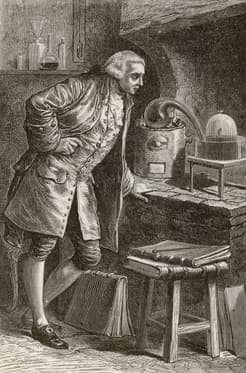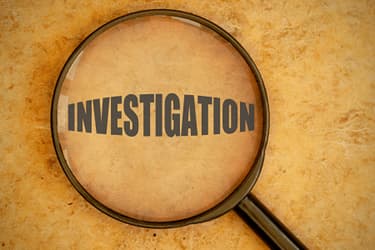Embibe Experts Solutions for Chapter: Is Matter Around us Pure?, Exercise 1: Exercise
Embibe Experts Science Solutions for Exercise - Embibe Experts Solutions for Chapter: Is Matter Around us Pure?, Exercise 1: Exercise
Attempt the practice questions on Chapter 2: Is Matter Around us Pure?, Exercise 1: Exercise with hints and solutions to strengthen your understanding. THINK ABOVE AND BEYOND SCIENCE PRACTICE BOOKS solutions are prepared by Experienced Embibe Experts.
Questions from Embibe Experts Solutions for Chapter: Is Matter Around us Pure?, Exercise 1: Exercise with Hints & Solutions
An experiment on the solubility of solids in liquid was carried out by a group of pupils. They took several salts and dissolved them in water separately. These solutions were gradually heated in a separate beaker, and the solubility was measured at various temperatures. For many salts, a graph has been plotted against solubility vs temperature. The graph below depicts the solubility of various salts at various temperatures

From the information given in the graph conclude the general effect of temperature on the solubility of solids in liquids? Also find the salt that is almost equally soluble at all temperatures?
Tiana and Prasanna were playing at home. Prasanna was playing PUBG and Tiana was doing puzzles. Mom called both of them and gave a cup of ice cream to each of them. Tiana immediately started eating ice cream, but Prasanna was playing PUBG. After some time, Tiana saw Prasanna's cup of ice cream. She observed that the ice cream started melting and also noticed that in that cup, ice cream was present in two forms, such as in liquid form and solid form. Ignoring him, she again started eating ice cream. After completing eating ice cream, she observed that all the ice cream present in Prasanna's bowl got converted into liquid. So she called Mom and told her about this thing. Then Mom took that bowl and kept it in the freezer. After some time, Mom took the ice cream bowl from the fridge and gave it to Prasanna. But the thing Tiana noticed is that liquid ice again got converted into a solid. So, she asked her Mom why ice cream changed to a liquid state when she kept it in the room, but when she kept it in the fridge again, it converted to solid. Is there any reason behind it? Then Mom said yes, substances change their state in different temperatures, so the same thing happened with the ice cream also.

Now, can you answer the below question?
When ice cream is kept in a room for some time, it changes to a liquid state. When this liquid ice cream is kept in the freezer again, it is converted into a solid. The below graph shows how the temperature of the ice cream changes with time.

In which region of the graph both the liquid and the solid are present?
On August , Priestley obtained a colourless gas by heating red mercuric oxide. Finding that a candle would burn and that a mouse would thrive in this gas, Priestley was not yet sure, however, that he had discovered a “new species of air.” The following October, he accompanied the French chemist Antoine Lavoisier and informed him how he obtained the new “air”. This meeting between the two scientists was highly significant for the future of chemistry. Lavoisier immediately repeated Priestley’s experiments and, between and , conducted investigations named the gas discovered by Priestley as oxygen and made an important conclusion.

- What did Lavoisier conclude about the gas?
Take three beakers and fill them with water. Add two spoons of salt to each of them. Place the first beaker undisturbed, stir the second and warm the third beaker. What do you observe from the above three situations?
(a) Which method allows the solute to dissolve in the solvent easily?
(b) If you increase the temperature of the third beaker, what will happen?
(c) Repeat the activity by using salt crystals instead of salt powder. What change do you observe

Tanishka has been given a chart shown below with three mixtures and related methods of separation. She gave some reasoning for the validation of the methods used which are also recorded in the table.

| Investigation | Mixture | Method of separation | Student's scientific reasoning |
| A | Fabric dye | Paper chromatography | Individual components of liquid mixtures can be separated using the process of chromatography. |
| B | Activated carbon and ethanol | Simple distillation/Evaporation | Simple distillation will result in the removal of water, leaving carbon as a residue. |
| C | Benzene (non-polar) and water (polar) | Filtration | As these two different liquids are not miscible, the denser liquid will be trapped by the filter paper while the other liquid will pass through and can be separated. |
Which of Tanishka's reasoning is/are wrong and if the mentioned methods are wrong then what is the appropriate method for the given mixtures?
Suhana wanted to separate the mixture of dyes constituting a sample of ink. He marked a line by the ink on the filter paper and placed the filter paper in a glass containing water as shown in the image. The filter paper was removed when the water moved near the top of the filter paper.

(i) What would you expect to see, if the ink contains three different coloured components?
(ii) Name the technique used by the child.
(iii) Suggest one more application of this technique.
In , English chemist Henry Cavendish isolated hydrogen, which he called "inflammable air". Cavendish discovered hydrogen as a colourless, odourless gas that burns and can form an explosive mixture with air. He published a paper in , on the production of water by burning inflammable air in dephlogisticated air. This experiment simply found that water was condensed from the air through the burning of hydrogen.

Observe the below-given statements and identify which of the statements are the facts.
(P) Dephlogisticated air is in fact oxygen which has an elementary nature.
(Q) Inflammable air is a compound that burns to give another compound water.
(R) Water is a compound that has a fixed ratio of both the air involved in its formation.
(S) Inflammable air on burning breaks into its constituent and as a result water is produced.
Avinash and Pratiksha were doing experiments in a chemistry lab. Avinash took of water at room temperature in a beaker and dissolved a little solid S in it by stirring to obtain a solution X. Then Pratiksha started adding more and more solid S to the solution with constant stirring while keeping the temperature of the solution constant at . At the same time, Pratiksha and Avinash observed that no more solid dissolves in water and, at the same time, some solid is also left undissolved at the bottom of the beaker. So, they separated the contents of the beaker by filtering them through filter paper, and they got solution Y in the form of a filtrate.

Please answer the below question by understanding the information given above.
(a) What type of solution is X?
(b) What type of solution is Y?
(c) What will you observe if the solution Y at is cooled down to by keeping the beaker in crushed ice? Give a reason for this observation.
(d) Give the term used to denote "the amount of solids dissolved in a given water".
